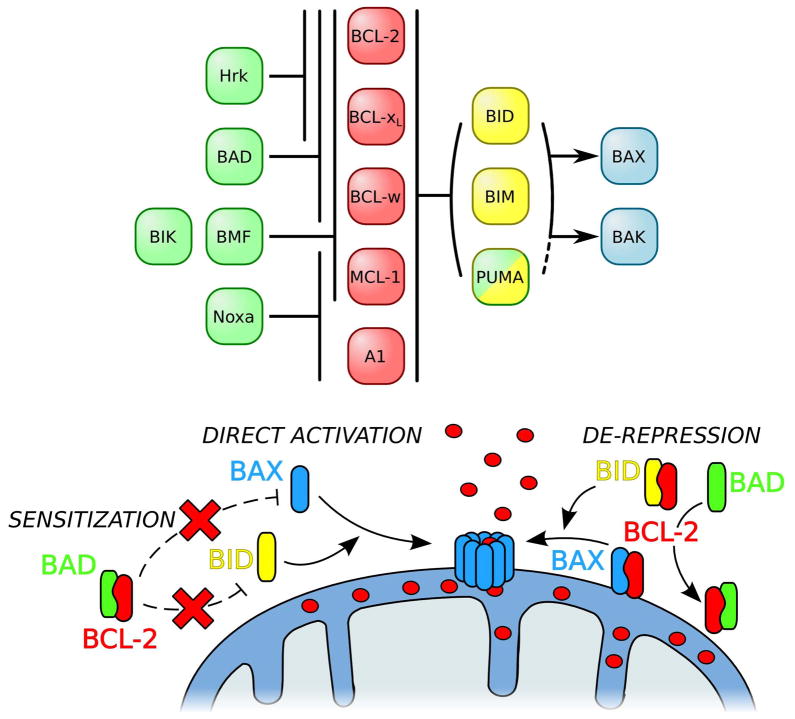Figure 3.
Interactions and mechanisms of the BH3-only proteins. BH3-only proteins are subdivided in two groups. Sensitizers (in green) selectively interact with anti-apoptotic BCL-2 proteins (in red); as an example, BAD binds to BCL-2, BCL-xL, and BCL-w; whereas Noxa binds to MCL-1 and A1. By binding to the anti-apoptotic BCL-2 proteins, sensitizers prevent the sequestration of the pro-apoptotics and prime for BAX/BAK activation. Direct activators (in yellow) have a broad interaction range within the BCL-2 family. They are able to interact directly with and activate BAX and BAK to induce MOMP. On the other hand they can also counteract the anti-apoptotics. When pro-apoptotics are sequestered by anti-apoptotics, de-repressor BH3-onlys are able to disrupt these complexes. BID and BIM are well characterized direct activators BH3-only proteins[171,172], however the role of PUMA as direct activator remains controversial.[173–175] Lines with stops and arrows indicate an inhibition and an activation, respectively.

